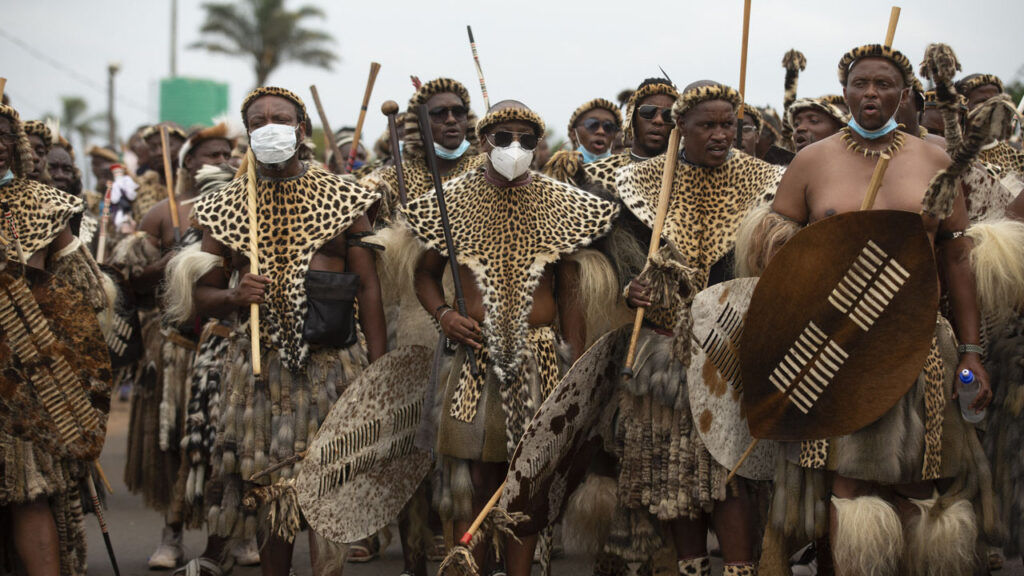
Clad in leopard skins and multi-coloured beads, hundreds of mourners gathered Wednesday to pay their respects to the king of the Zulus, South Africa’s largest ethnic group, who died last week.
King Goodwill Zwelithini was the longest-serving monarch in Zulu history, reigning for half a century through years of apartheid and democratic transition.
He died early on Friday in the eastern city of Durban, aged 72, after weeks of treatment for a diabetes-related illness.
His remains have been taken back to his birthplace, the small southeastern town of Nongoma in Kwa-Zulu Natal province, where he will be laid to rest after midnight.
The intimate ceremony, to be conducted behind closed doors at the KwaKhethomthandayo royal residence, is referred to as a “planting” rather than a burial.
Bare-breasted women in elaborate necklaces and headbands danced and sang as they paraded to the mortuary where Zwelithini’s body is being kept.
Men known as “amaButho”, or Zulu regiments, followed the maidens in traditional leopard skins and ostrich feathers — wielding spears, shields and clubs known as knobkerries.
The procession marched behind a banner reading “thank you for being the shining light of hope”.
They stopped for a brief vigil outside the town hall where they were joined by locals, some still in their work uniforms.
“We feel extremely naked, we feel like somebody has undressed us, deprived us of the blanket that covered us,” said town mayor Albert Mncwango.
Although Zwelithini’s title did not bestow executive power, the charismatic king had moral influence over more than 11 million Zulus, nearly a fifth of the country’s population.
“He was a symbol of respect, unity and he loved his people,” said Mazwi Zulu, 31, a distant cousin to the king.
“He didn’t want to see anyone begging and encouraged us to be farmers.”
British defeat
Zwelithini rose to the throne during apartheid in 1971, aged only 23, three years after his father died.
Returning from hiding over assassination fears, Zwelithini was crowned as the eighth Zulu monarch.
Zwelithini basked in the legacy of famous and defiant Zulu kings — his ancestors — who inflicted one of the British Empire’s worst defeats in 1879.
But he was also accused of playing into the hands of the apartheid system’s fight against the then banned African National Congress party, which opposed white minority rule.
Following his death, a local newspaper described him as the “custodian of Zulu culture” but also as a “useful idiot in the hands of the apartheid government”.
South Africa’s traditional leaders have been constitutionally recognised since the end of apartheid, and continue to play important symbolic and spiritual roles.
They advise legislators and have a say in cultural, land management and justice administration in their territories.
The Zulu king remains the most influential of all these leaders.
Zwelithini’s successor has yet to be disclosed.
The monarch had six wives and 28 children.
But his oldest son, who would traditionally have inherited the throne, was killed in Johannesburg last November.
The Zulus are popularly known for their vibrant culture, especially an ancient war dance performed by the rhythmic stomping of feet.
They do not refer to a deceased kind as “dead”, but say the monarch has “bowed”.













